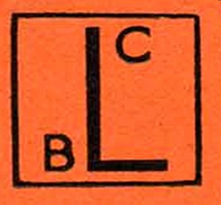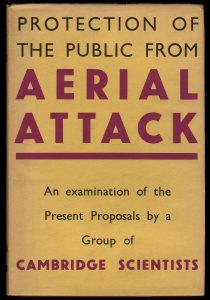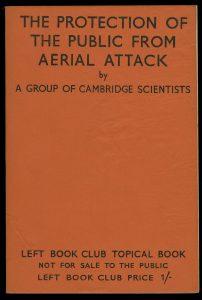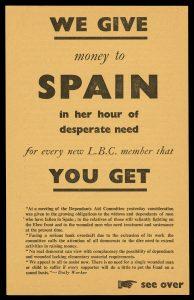

With over 200 titles , the Mahn Center holds one of the largest sets of Left Book Club (LBC) editions in the world. The Club’s distinct orange and red cloth-bound books combined mass publishing with mass politics, as organizer Victor Gollancz sought to educate his readership on poverty and unemployment, socialist theory, and the threat of fascism every month for twelve years. Together with John Strachey and Harold Laski, he published 252 Left Books, most of them new publications, and reached 57,000 subscribers by 1939, a significant event in the publishing and political history of twentieth-century Britain. During its first three years of rapid success, the LBC was not just a book service, but “a way of life” (Samuels 86).
The Club
- Gollancz had run his own publishing firm since 1928, finding success in mystery novels but not in socialist books. In 1935 he realized that the book club model could bring radical politics to a popular audience.
- A subscription only required readers to mail a form to Gollancz’s office. Members bought Club editions from their local booksellers for about one-third of the book’s normal price. There was no subscription fee.
- Popular authors who published in the LBC include Arthur Koestler , Stephen Spender , and George Orwell .
- Over 1,000 LBC discussion groups formed across Britain, hosting lectures and social events and attending rallies.
- WWII had dire consequences for the Club, including subscriber displacement and political disagreements between Gollancz, Strachey, and Laski. Operations ceased in 1948 at 8,000 members.
The Collection
The collection at Ohio University Libraries came together incrementally. In person or with this map , visitors can trace select books’ journeys from Great Britain to the Mahn Center, as certain volumes carry the marks of previous owners and sellers. The inside covers of Mission to Moscow, Pts. I and II (1942) by Joseph E. Davies have epigrams in the handwriting of an officer-in-training who was likely reading the books just before he went to war. A narrative exists beyond the texts, with signatures, locations, and notes revealing the lives of LBC members during this epoch.


- Club editions are distinct from their standard trade counterparts in appearance and material, as illustrated by the dual copies of The Protection of the Public from Aerial Attack (1937).
- Until WWII, many thought the LBC to be a Soviet front. Dudley Collard’s Soviet Justice and the Trial of Radek and Others (1937) and Gollancz’s own Our Threatened Values (1946) demonstrate the Club’s slow shift from pro- to anti-U.S.S.R.
- The archives holds every choice of the month and many extra materials, including original LBC subscription forms and books from the competing Right Book Club.
Beyond the Books
- Leaflets advertise different membership categories and extra types of books. The “Supplementary” and “Educational” series often went beyond politics into science, music, and children’s literature.
- New membership categories often coincided with political causes, such as the Food Ship for Spain. This scheme donated money to soldiers fighting fascism in the Spanish Civil War.
- From the books’ distinct look to the Club’s novel business structure, this collection offers research opportunities to graphic designers, political historians, and publishers.

Thanks to a Libraries’ 1804 Special Library Endowment Fund , this LBC set has reached about 240 titles, making it the largest in the U.S. and one of the most complete in the world, in company with The University of Sheffield and Princeton University . A bound, complete run of the Left News (1936-1948), the Club’s accompanying journal, rounds out the new acquisitions. There are only nine auxiliary books that the Mahn Center does not have.
For further reading, see John Lewis’ book The Left Book Club: An Historical Record (1970) and a Housmans Bookshop in London, which recently launched a twenty-first century version of the Club .
For more information about the Left Book Club volumes at the Mahn Center, please contact Miriam Intrator.
Page created by Marc Blanc, ENG 4940 Research Apprenticeship, Spring 2017
